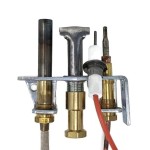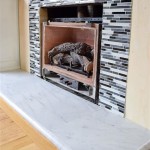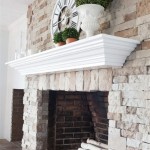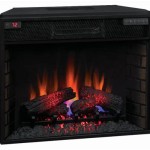Unlocking Culinary History: Fireplace Cooking Cranes
The fireplace cooking crane represents a pivotal advancement in the culinary arts, predating the widespread adoption of stoves and ovens. This simple yet ingenious device drastically improved cooking conditions and expanded menu possibilities within the domestic sphere. Understanding the functionality and evolution of the cooking crane provides valuable insight into the historical development of food preparation and domestic life.
A fireplace cooking crane, in its essence, is a pivoting arm or bar, traditionally made of iron, installed within a fireplace. Its primary function is to suspend cooking pots and kettles over the open fire. The crane allows for the safe and convenient raising and lowering of the cookware, enabling cooks to regulate the heat exposure and prevent accidental burns. The crane's design, while seemingly basic, addresses several key challenges inherent in cooking over an open fire.
The structure typically comprises a vertical post securely anchored within the fireplace's brickwork or stone. A horizontal arm pivots on this post, extending over the fire. This arm is often equipped with adjustable hooks or chains, facilitating the suspension of various sizes and shapes of cookware. The ability to adjust the height of the pots is crucial for controlling the cooking temperature. Raising the pot reduces the direct heat, ideal for simmering or slow cooking, while lowering it intensifies the heat for boiling or searing.
The widespread adoption of fireplace cooking cranes reflects their numerous advantages over previous cooking methods. Before the crane, cooks typically placed pots directly on the hearth or used tripods, which were cumbersome and less stable. The crane offered improved safety, control, and convenience, contributing significantly to the evolution of cooking practices.
Enhanced Safety and Reduced Risk of Injury
One of the most significant benefits of the fireplace cooking crane is the enhanced safety it provides. Cooking over an open fire presents inherent risks, including burns from hot surfaces and accidental spills of boiling liquids. Prior to the crane, cooks often had to reach directly into the fire to adjust or remove pots, significantly increasing the likelihood of injury. The cooking crane, by allowing for the safe raising and lowering of cookware from a distance, significantly reduced the risk of burns and other accidents.
The stability afforded by the crane also minimizes the risk of spills. Tripods, while providing a stable base, could be easily bumped or knocked over, resulting in scalding liquids and potential injuries. The secure mounting of the crane within the fireplace structure provides a much more stable platform, reducing the likelihood of accidental spills and associated hazards. This improved safety was particularly important in households with children and animals, where the risk of accidental contact with hot surfaces was higher.
Furthermore, the crane's design often incorporated features to prevent accidental dislodgement of the cookware. Hooks and chains were designed to securely hold the pots in place, even when subjected to movement or jostling. This additional safety measure further minimized the risk of spills and injuries, making cooking over an open fire a much safer and more manageable task.
Improved Temperature Control and Cooking Versatility
Beyond safety, the fireplace cooking crane provided a marked improvement in temperature control. The ability to adjust the height of the cookware above the fire allows cooks to precisely regulate the heat exposure, enabling a wider range of cooking techniques. Lowering the pot closer to the flames intensifies the heat, ideal for boiling liquids or searing meats. Raising the pot reduces the direct heat, creating a gentler cooking environment suitable for simmering soups, stews, or slow-cooking tougher cuts of meat.
This precise temperature control opened up new culinary possibilities. Cooks were no longer limited to simple boiling or roasting. They could now experiment with more complex recipes that required nuanced heat management. This led to the development of richer, more flavorful dishes and a greater diversity in the culinary repertoire. The ability to simmer foods for extended periods also allowed for the extraction of maximum flavor from ingredients, resulting in more satisfying and nutritious meals.
The crane's versatility also extended to the types of cookware that could be used. The adjustable hooks and chains could accommodate pots of various sizes and shapes, providing cooks with greater flexibility in their choice of cooking vessels. This meant that they could use the most appropriate pot for the specific dish they were preparing, further enhancing the quality and flavor of the food.
Enhanced Efficiency and Convenience in the Kitchen
The fireplace cooking crane also contributed to greater efficiency and convenience in the kitchen. Prior to the crane, managing multiple pots and pans over an open fire was a laborious and time-consuming task. Cooks had to constantly monitor the fire and adjust the position of the cookware to maintain the desired cooking temperature. The crane simplified this process, allowing cooks to manage multiple dishes simultaneously with greater ease.
The crane's design also made it easier to add ingredients to the pots while cooking. Instead of having to lift the pot off the fire, which could be difficult and dangerous, cooks could simply lower the pot slightly and add the ingredients. This saved time and effort and reduced the risk of spills. The ability to easily access the pots also facilitated stirring and seasoning, ensuring that the food was cooked evenly and to the desired taste.
Furthermore, the crane helped to keep the kitchen area cleaner and more organized. By suspending the pots above the fire, the crane reduced the amount of soot and ash that accumulated on the hearth. This made it easier to clean the kitchen and maintain a hygienic cooking environment, which was particularly important in households with limited resources for cleaning and sanitation.
The materials used in the construction of fireplace cooking cranes were typically selected for durability and heat resistance. Iron was the most common choice, owing to its strength, ability to withstand high temperatures, and relative affordability. Blacksmiths played a crucial role in crafting these cranes, utilizing their skills in forging and shaping iron to create functional and reliable cooking tools. The craftsmanship involved in creating a sturdy and well-balanced crane was highly valued, as it directly impacted the safety and efficiency of cooking.
Variations in the design of fireplace cooking cranes existed across different regions and time periods. Some cranes featured more elaborate mechanisms for adjusting the height of the cookware, while others incorporated decorative elements to enhance their aesthetic appeal. These variations reflect the diverse cultural and economic contexts in which the cranes were used. Wealthier households might have commissioned more ornate and complex cranes, while simpler, more utilitarian designs were common in less affluent homes.
The legacy of the fireplace cooking crane extends beyond its practical function. It represents a significant step in the evolution of cooking technology and reflects the ingenuity of cooks throughout history. The crane transformed the way food was prepared, making it safer, more efficient, and more versatile. Its impact on culinary practices can still be felt today, as many modern cooking techniques and recipes have their roots in the age of the open hearth and the humble cooking crane.
The gradual replacement of the fireplace cooking crane with modern stoves and ovens marked a significant shift in domestic technology. However, the crane's influence on cooking practices and culinary traditions remains undeniable. It serves as a reminder of the resourcefulness and adaptability of past generations in meeting their basic needs and creating a more comfortable and productive home environment. The study of the fireplace cooking crane provides valuable insights into the history of food, technology, and domestic life.

Cooking Fireplace Cranes

Cooking Fireplace Cranes

Cooking Fireplace Cranes

Cooking Fireplace Cranes

Fireplace Cooking Hoffman S Forge

Minuteman Swivel Arm Fireplace Crane Cooking Accessories Wood Burning Stove

Cooking Fireplace Cranes

Fireplace Cooking Hoffman S Forge

Fireplace Cooking Hoffman S Forge

Cooking Fireplace Cranes
Related Posts








